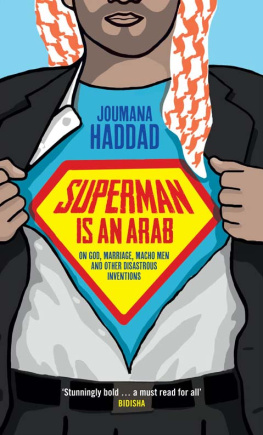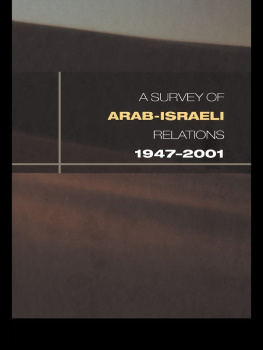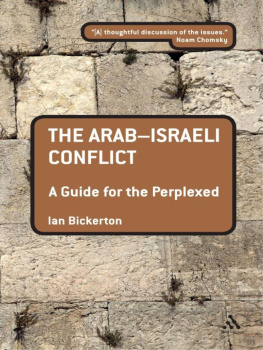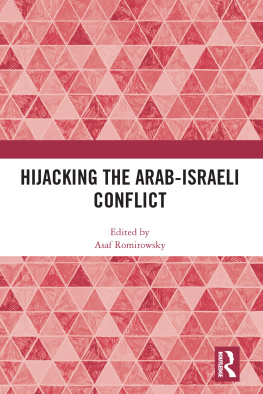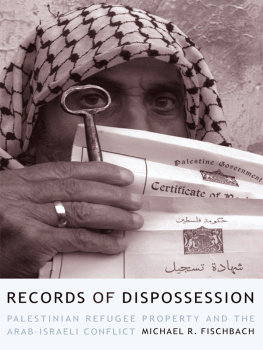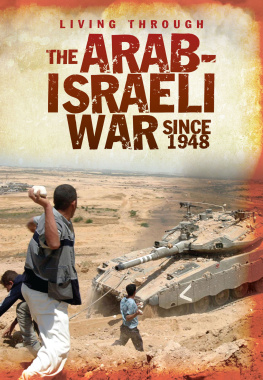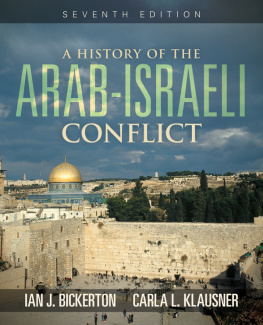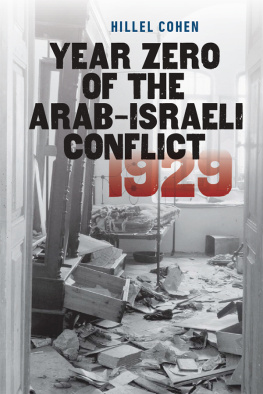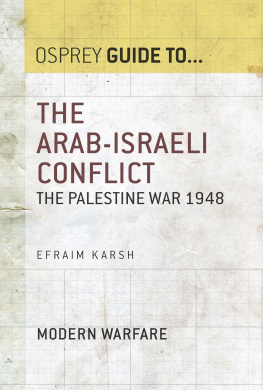Cover headline from al-Dif, November 30, 1947: The decision to partition made in America but will not be carried out in Palestine. And those who would harm us should know that they will be harmed.

First published in the UK in 2018 by
Intellect, The Mill, Parnall Road, Fishponds, Bristol, BS16 3JG, UK
First published in the USA in 2018 by
Intellect, The University of Chicago Press, 1427 E. 60th Street, Chicago, IL 60637, USA
Copyright 2018 Intellect Ltd.
All rights reserved. No part of this publication may be reproduced, stored in a retrieval system, or transmitted, in any form or by any means, electronic, mechanical, photocopying, recording, or otherwise, without written permission.
A catalogue record for this book is available from the British Library.
Copy-editor: MPS Technologies
Cover designer: Aleksandra Szumlas
Production manager: Matthew Floyd, Mareike Wehner
Typesetting: Contentra Technologies
Print ISBN: 978-1-78320-910-1
ePDF ISBN: 978-1-78320-912-5
ePUB ISBN: 978-1-78320-911-8
Printed and bound by Hobbs, UK
Cover image: Panorama of the Dome of Rock Mosque at the Temple Mount in the Old City of Jerusalem by Askii, 2014. Licensed under CC BY-SA 3.0.
This is a peer-reviewed publication.
This monograph is dedicated with all my love to:
Barbara Baker
Wadi Baker
Katie Shae
and
Princess Quinn Alice
Contents
Mary Marki
Acknowledgments
Investigation for the monograph took me to three continents. In Egypt, I researched at the American University in Cairo (AUC). In Damascus, before the outbreak of its civil war, studies were conducted at the Office Arabe de Presse and de Documentation. Most of the research, however, was done in Lebanon at the American University of Beirut (AUB) and to a much lesser extent at the Institute of Palestine Studies. AUBs collection was the largest in terms of the number of different journals, found in hard copies, microfilm and microfiche, and broadest in terms of years covered. Since I teach in southern California, the newspaper collection at the University of California, Los Angeles was accessible and filled in critical gaps in this study. The research was done in pieces over two decades: one full year in Beirut and Damascus, one sabbatical and three summers.
Like others, I am indebted to colleagues who helped along the way. This monograph could not have been written without the aid of many people who provided critical advice and opened doors. I am particularly indebted to Jibran Bikhazi, Mildred Corsette, Linda Sadaka, J.D. Call, Micheline Salhab, Samir A. Darwich, Raymond G. Peterson, Isabel H. George, Tareq Y. Ismael, Amer Haider, Mary Marki, and the three anonymous readers whose critiques allowed me to improve the final product. Most important was Fouad I. Haddad, the retired budget officer at the American University of Beirut. He spent many, many hours reading and improving this manuscript especially making sure the translations were accurate. Though I was trained as a Middle East historian, his knowledge of Middle East history was unsurpassed. And he was a good friend.
Foreword
The Arab-Israeli Crisis in the Arab Press: An Untapped Resource
Mary Marki
When one considers the importance of the Arab-Israeli crisis in contemporary world politics and the vast amount of academic research dedicated to the topic, the absence of scholarship devoted to Arab print media is surprising. Since the Second World War, undoubtedly, no single issue has occupied the Arab mind as the growth of political Zionism and the foundation of the State of Israel. Further, even though Western media outlets regularly quote the Arab press when covering issues concerning the Palestine question, very little is actually written in European languages regarding the origins, biases, and political beliefs of the press in the Middle East regarding the topic, especially in the period surrounding the establishment of Israel.
Although the Arab-Israeli conflict has been analyzed from almost every imagined vantage point, there does not exist a study dedicated exclusively to what Arab journalists and politicians thought about the conflict as expressed in the daily print media during the decades after the 1947 UN partition resolution. While some articles and journals have explored certain minute aspects of the Arab press, they tend to either examine the trials or tribulations of specific newspapers or present short, issue-oriented studies lacking a more comprehensive approach.
The absence of research addressing the relationship of Arab newspaper opinion to the Arab-Israeli conflict was noted three decades ago by Rashid Khalidi when he surveyed one Beirut newspaper, al-Mufd, over a 3-year period. Addressing this void, he urged other scholars to pay more attention to the Arab press as a basic source of knowledge about the contemporary Arab world. Khalidi argued that the press was an untapped yet necessary part of any attempt to trace a mass-based Arab political movement. He went on to decry most scholarly work on the Middle East for not using the Arab press as a major primary source.
Goals of the Manuscript
This monograph attempts to remedy the general lack of information that exists in the West regarding the Arab press by providing a short history of the Arab print media as well as an in-depth study of translated Arab media sources. The manuscript has two different goals. The first is contained in Chapter 1, which begins with a brief historical narrative of Arab newspapers from the 1940s to the mid-1970s, when a free press virtually disappeared. Following this short history of the Arab press during the first three decades of the Arab-Israeli conflict, Haddad explores the historiography of the Arab print media, compiling a valuable collection of available scholarship on the subject. Since censorship was, and is, an ongoing problem in Middle East journalism, Chapter 1 concludes with an introduction to the problem of censorship that began during the Ottoman period, almost simultaneously with the first printed journals.
With this historical background, the reader moves to the second goal, which encompasses the rest of the manuscript beginning with Chapter 2, examining the Arab print medias view of the Arab-Israeli conflict in its first three decades. By giving voice to the Arab political journalists who wrote editorials and opinion pieces, the bulk of the book explores the variety of opinions held in the Arab print media regarding the Arab-Israeli conflict.
Because many of these sources have been unavailable to scholars due to the barriers of language and lack of accessibility, this monograph is an important addition to our knowledge of the Arab-Israeli conflicts early years. Though technically not a primary source, this volume will provide translations of those who had a first-hand view; from the Arab perspective. In providing both a general history of the Arab press and a compiled study of translated sources in one manuscript, this volume helps to bridge the information gap that exists in the West, generally, concerning the Arab press and offers significant new sources for future scholars who examine the first three decades of the Arab-Israeli conflict.





